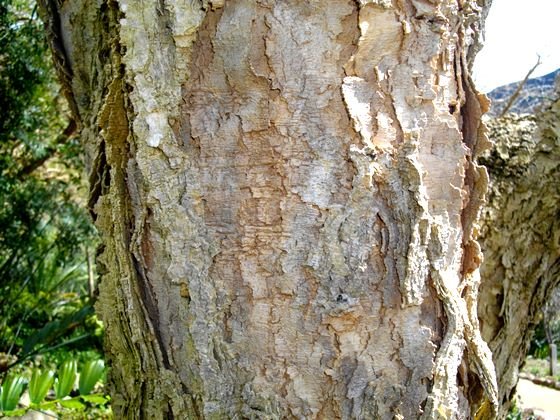Vachellia sieberiana var. woodii flaky bark

Author: Ivan Lätti
Photographer: Ivan Lätti
There is a stage in the stem growth of Vachellia sieberiana var. woodii, between young green and old corky, when its bark becomes conspicuously papery and flaky.
Thin flakes may drop off spontaneously or from contact with some arriving, non-tree source. Trees cannot duck the oncoming traffic in whatever form or manner it might arrive. Bark is a buffer.
The opposite also happens: Gravity may be defied for a while by layers of the soft outer material accumulating on the stem, staying there undisturbed for unspecified periods. The inevitable departure, a minor avalanche, however insignificant, is still unique; one of countless micro-events that make up nature.
The stem patches, big and small, are partly random in shape, yet ever so slightly patterned in strips from the longitudinal fissures that start the disintegration. The girth of a living tree trunk expands slowly, but continually, adding sideways surface tension in its bark.
The new and old pieces of bark gradually losing life vary in subtle pastel shades. They present challenges to the landscape painter, go unnoticed by almost everyone else.
Watch carefully! Looking with intent is an observational habit that can be honed to a skill. Its reward is a richer experience of nature and much else that meets the eye.
Such a habit demands a slower lifestyle than what is currently fashionable or enforced. It focuses the senses. Requiring silence and patience at the start, it rewards by bestowing more of both. The app for this is neither digital nor electronic. Acquire it outdoors, it is unavailable on the Internet.

